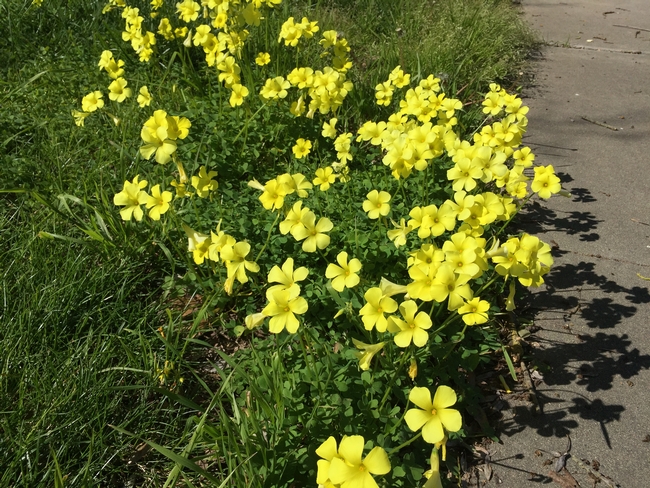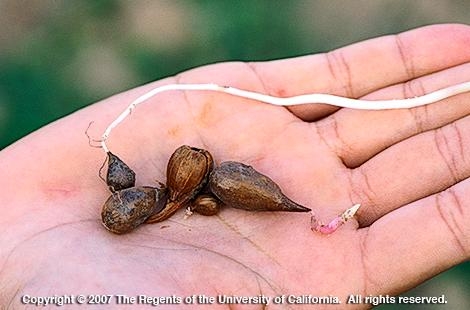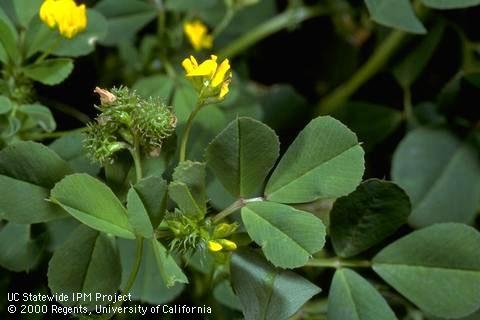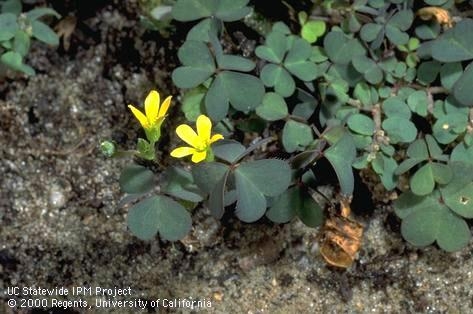- Author: Anne E Schellman
Recently, someone called our office needing help identifying a plant he said was taking over his landscape and crowding out his other plants. The caller noted that the original patch of this plant had doubled in size since last year. He described it as having clover-like leaves and yellow flowers. This fits the description of several weeds, including:
- Bermuda buttercup (also called buttercup oxalis)
- California burclover
- Creeping woodsorrel

This time of year, Bermuda buttercup is prominently seen in the landscape, especially in shady areas. I suspected he might be describing this weed, so I asked if he was willing to dig up a plant and look for bulbs. After a moment of digging, he said, “Yes! I've found some small brown bulbs!” This confirmed the weed was indeed Bermuda buttercup.

In his landscape, Bermuda buttercup had taken over a 50 square-foot area and was growing in and around other ornamental landscape plants. I used the online IPM Pest Notes: Creeping Woodsorrel and Bermuda Buttercup to tell him more about this weed.
The publication recommends manual removal of the whole plant, including the bulbs. However, you can hand pull or mow the top to deplete the bulb reserves but killing the plant this way could take years.
The caller had trouble bending over and digging and hoped he could use an herbicide to kill the weeds. Unfortunately, herbicides will only kill the top portion of the plant, which will regrow. Also, if they drift to garden plants, the herbicides listed in the publication can kill them.
I recommended he call a local nursery or garden center and ask for the contact information of a professional landscaper or gardener for help digging out the weedy bulbs.
If you have one of the other two weeds mentioned in the above list, visit the Clovers Pest Notes for more information.
For identification and management help with weeds in your garden or landscape, bring in a sample to the UCCE Master Gardeners at 3800 Cornucopia Way Ste A, Modesto, CA 95358 or call (209) 525-6800.



